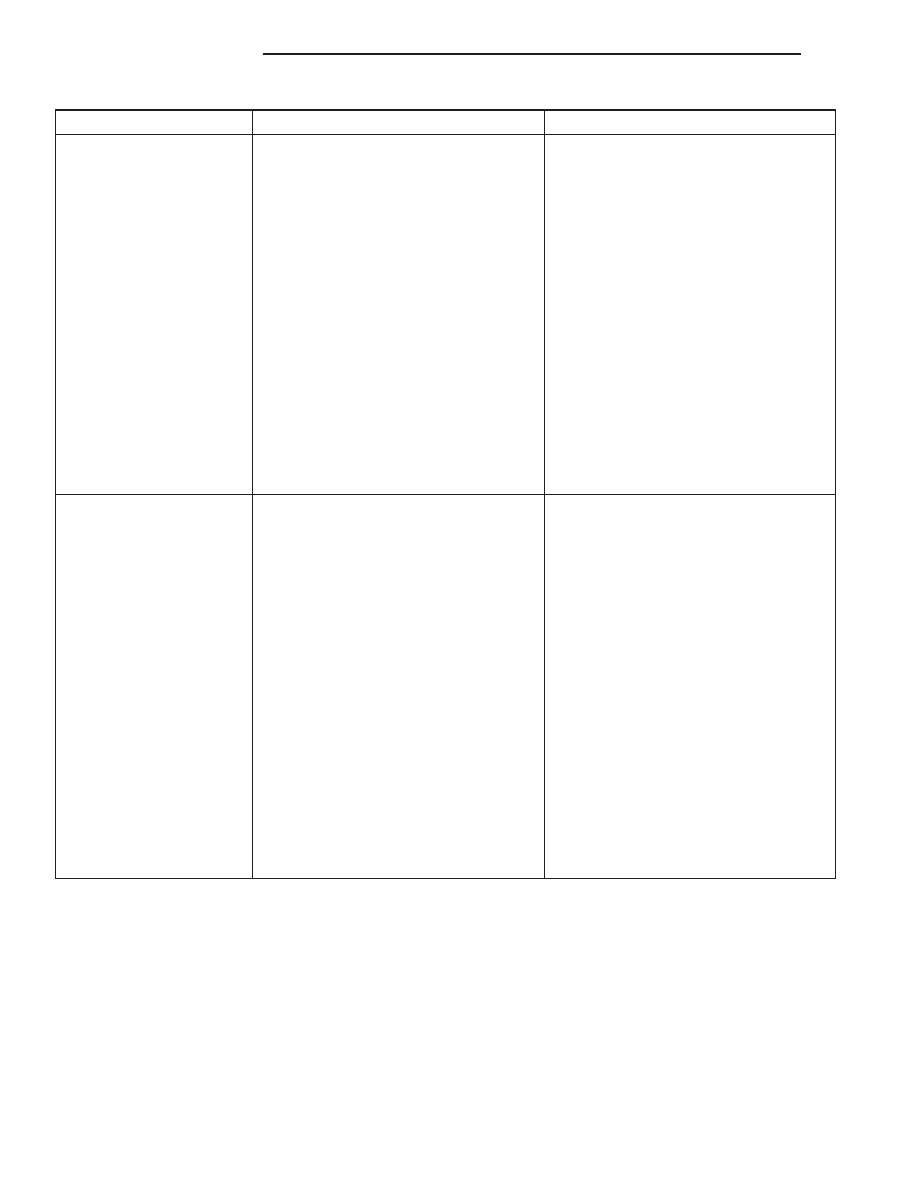Jeep Grand Cherokee WJ. Manual - part 64

CONDITION
POSSIBLE CAUSES
CORRECTION
INADEQUATE AIR
CONDITIONER
PERFORMANCE
(COOLING SYSTEM
SUSPECTED)
1. Radiator and/or A/C condenser is
restricted, obstructed or dirty (insects,
leaves etc.)
1. Remove restriction and/or clean as
necessary. Refer to Radiator Cleaning in
this group.
2. Electric fan not functioning.
2. Inspect electric fan for proper
operation. Refer to Electric Cooling Fan
in this section.
3. Engine is overheating (heat may be
transferred from radiator to A/C
condenser. High underhood
temperatures due to engine overheating
may also transfer heat to A/C
components).
3. Correct overheating condition. Refer
to text in Group 7, Cooling.
4. All models with are equipped with air
seals at the radiator and/or A/C
condenser. If these seals are missing or
damaged, not enough air flow will be
pulled through the radiator and A/C
condenser.
4. Check for missing or damaged air
seals and repair as necessary.
INADEQUATE HEATER
PERFORMANCE.
THERMOSTAT FAILED IN
OPEN POSITION
1. Has a diagnostic trouble code (DTC)
been set?
1. Refer to group 25, Emission Control
System and replace thermostat if
necessary.
2. Coolant level low.
2. Refer to Testing Cooling System for
Leaks in the manual text. Repair as
necessary.
3. Obstructions in heater hose fittings at
engine.
3. Remove heater hoses at both ends
and check for obstructions. Repair as
necessary.
4. Heater hose kinked.
4. Locate kinked area and repair as
necessary.
5. Water pump is not pumping water to
heater core. When the engine is fully
warmed up, both heater hoses should
be hot to the touch. If only one of the
hoses is hot, the water pump may not
be operating correctly. The accessory
drive belt may also be slipping causing
poor water pump operation.
5. Refer to Water Pumps in this group.
Repair as necessary. If a slipping belt is
detected, refer to Engine Accessory
Drive Belts in this group. Repair as
necessary.
7 - 18
COOLING SYSTEM
WJ
DIAGNOSIS AND TESTING (Continued)